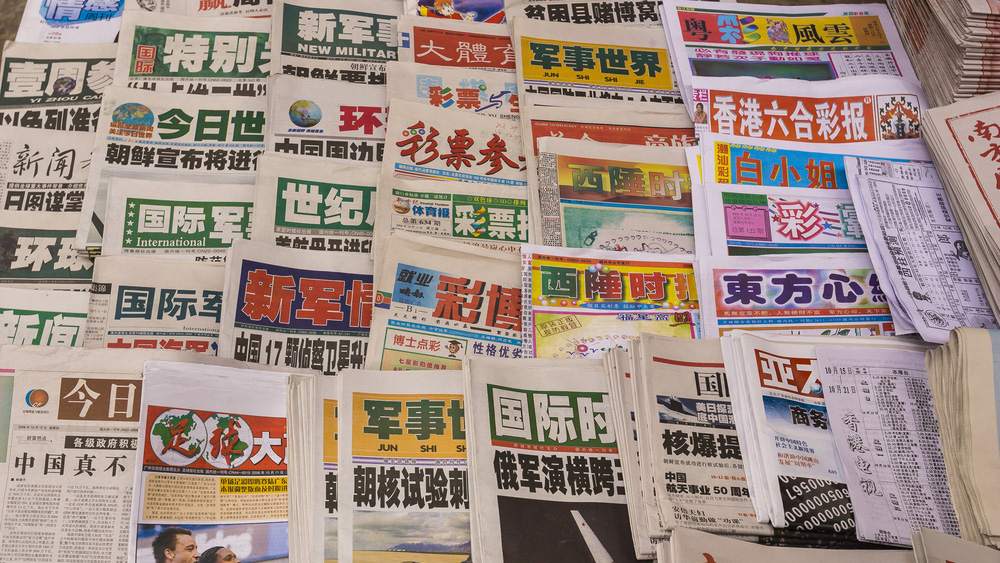Chinese Media Finding Balance via Consolidation

The formation of newspaper groups bringing together business publications with party ones is actually a vehicle for professionalisation, says Prof. Tianyu Zhang.
Investors in China have developed sharper antennae these days and are distinguishing between public relations and news in making investment decisions. China’s media outlets serve the state first, but business news in commercially run newspapers owned by conglomerates has a much bigger impact on stock market movements than news published in state-run, propagandistic titles.
Investors can easily detect whether a piece of “positive news” about a certain company is genuinely positive or not, according to a study1 last year, by The Chinese University of Hong Kong (CUHK) Business School involving the analysis of the content and tone of 1.77 million articles published in China between 2000 and 2010 and their impact on the share price of listed companies.
The study found that investors are often quick to pick up falsehoods in official mouthpieces, such as The People’s Daily, and are more likely to trust newspapers run with a high degree of professionalism. These papers take a more independent stance, do not always toe the party line and often present critical views that are lacking in official newspapers.
What is interesting is that both kinds of newspapers now frequently belong to the same conglomerates. Media reforms in China over the past three decades have led to a “double-track” structure which has provided greater room for business media to evolve and grow in professional credibility on a parallel track to their propagandistic counterparts.
The first wave of reform in the 1980s saw a proliferation of commercially driven, business-focused newspapers. Unlike their state-funded counterparts, these newspapers didn’t receive government subsidies and relied on subscriptions and advertising revenue.
The second stage of development, which started in 1996, saw the emergence of newspaper conglomerates. The government started to group commercial and state-run local newspapers together into geographically based media conglomerates. The process began with the formation of the Guangzhou Daily News Group. Today, there are 38 such news groups across China.
Greater Transparency
Industry reform continued after the 1997-98 Asian financial crisis. It became clear to the Chinese government as well as to the market that greater transparency on corporate developments could benefit businesses and investors and contribute to social stability. A key business publication that emerged post-crisis was Caijing, a financial magazine that went on to serve as a watchdog of the financial markets and expose numerous cases of corruption and fraud.
What may be surprising to skeptics and of value to policymakers in autocratic developing countries elsewhere is that the Chinese government did not have to relinquish control of the underlying news organisations while the professionalism of business journalism improved. On the contrary, the government was able to strike a balance suited to the emerging modern society with a new generation of readers which does not fall for blatantly state-controlled news nor is wholly trusting of news from social media.
By gathering commercially run financial papers and state-subsidised mouthpieces under the same umbrella, the government aimed to achieve a balance of power. The results of these reforms have been that business newspapers have actually become less politically biased after commercialisation; whereas they previously needed to acknowledge the state’s political agenda while catering to market demand for objective information, this obligation has been lessened now that the business papers have corporate siblings focused on propagating the state’s line. Thus, consolidation has actually resulted in the presentation of a broader diversity of perspectives on corporate, market and economic developments.
Balance is indeed a keyword that keeps surfacing. The way a typical Chinese media conglomerate is now set up, with a mix of official and business publications, enables it to serve the editorial needs of both keeping the market informed and supporting the state. In effect, criticism of the government in a financial paper can be accepted if preceded by a positive report in a party paper within the same news group. So in the end, the reports balance out. In the old days, if financial papers did not cooperate with the government, they would be in trouble. Today, when commercially run papers coexist alongside party papers, balance can be realized on a group level.
The balance thus achieved has created the illusion of a freer press in China. That illusion will gradually morph into reality. External pressures will eventually drive the Chinese media to greater levels of professionalism.
In our study, we also investigated Chinese-language media in Hong Kong, Singapore and Taiwan. As expected, they all exhibit less political bias than their mainland counterparts. There is little doubt that such higher professional standards will one day spill over to China and contribute to a genuinely free business press.
Our research goes beyond the stock market and sheds light on a theme at the heart of Chinese culture, the so-called “golden mean.” Whether in politics or business, one must follow a balanced policy, combining respect for professionalism and official rules at the same time.
By Prof. Tianyu Zhang, Associate Professor of School of Accountancy and Associate Director of Centre for Institutions and Governance at CUHK Business School
This article was first published in Nikkei Asian Review on 12 April, 2016. Please click here to learn more about the background.
The China Business Knowledge (CBK) also published a feature article entitled “The Long Road to Diversifying Chinese Media” on 7 December, 2015 which was written based on the same research by Prof. Tianyu Zhang.
References
1Joseph D. Piotroski, T.J. Wong and Tianyu Zhang, “Political Bias of Corporate News in China: Role of Commercialization and Conglomeration Reforms“, 2015. Working paper.

